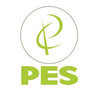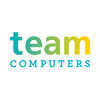Junior System Administrator
10+ Junior System Administrator Interview Questions and Answers

Asked in IT By Design

Q. How would you check for slowness on a workstation and what measures would you take?
To check slowness on a workstation, I would perform various diagnostic tests and optimizations.
Check CPU and memory usage using Task Manager or Resource Monitor
Scan for malware and viruses using antivirus software
Check for disk fragmentation and optimize disk usage
Update operating system and drivers to the latest versions
Disable unnecessary startup programs and services
Check network connectivity and speed

Asked in Volen Software Services

Q. Do you have any experience with SCCM and Windows OS migration?
Yes, I have experience in SCCM and Windows OS migration.
I have worked with SCCM to deploy software updates and patches.
I have also used SCCM to deploy new operating systems to computers.
I am familiar with the process of creating and deploying task sequences for OS migration.
I have experience with Windows 7 to Windows 10 migration.
I have also worked on Windows Server migration using SCCM.
I am comfortable with troubleshooting issues related to SCCM and OS migration.
Junior System Administrator Interview Questions and Answers for Freshers

Asked in ITC Infotech

Q. What are PST (Personal Storage Table) and OST (Offline Storage Table) files?
PST and OST files are data files used by Microsoft Outlook for storing emails, contacts, and calendar items.
PST files are used for storing emails and data locally on a computer.
OST files are used for offline access to emails when connected to an Exchange server.
PST files can be imported/exported easily, while OST files sync with the server.
Example: A PST file might be created for archiving old emails, while an OST file allows access to current emails without internet.

Asked in ITC Infotech

Q. How many layers are there in the OSI model, and what are their names?
The OSI model has 7 layers that standardize network communication protocols.
1. Physical Layer: Deals with the physical connection (e.g., cables, switches).
2. Data Link Layer: Manages node-to-node data transfer (e.g., Ethernet).
3. Network Layer: Handles routing of data packets (e.g., IP).
4. Transport Layer: Ensures reliable data transfer (e.g., TCP, UDP).
5. Session Layer: Manages sessions between applications (e.g., API calls).
6. Presentation Layer: Translates data formats (e....read more

Asked in ITC Infotech

Q. What are the steps to configure a printer using a DHCP IP address?
Steps to configure a printer using a DHCP IP address involve network setup, driver installation, and printer configuration.
Ensure the printer is connected to the network and powered on.
Access the printer's control panel to check its DHCP settings.
Obtain the printer's IP address from the control panel or print a configuration page.
On the computer, go to 'Devices and Printers' and select 'Add a Printer'.
Choose 'Add a network, wireless or Bluetooth printer'.
Select the printer fr...read more
Asked in Ethnotech Academic Solutions

Q. What is the process for configuring a DVR (Digital Video Recorder)?
Configuring a DVR involves setting up hardware, connecting to a network, and configuring recording settings.
1. Connect the DVR to a power source and TV using HDMI or RCA cables.
2. Connect the DVR to the internet via Ethernet or Wi-Fi for remote access.
3. Access the DVR's settings menu using the remote control.
4. Configure recording settings, such as schedule and resolution.
5. Set up user accounts for remote viewing on mobile devices or computers.
Junior System Administrator Jobs




Asked in IT By Design

Q. What is the difference between a switch, a hub, and a router?
Switch forwards data to specific devices based on MAC addresses, hub broadcasts data to all devices, router connects different networks.
Switch operates at layer 2 of the OSI model, hub operates at layer 1, and router operates at layer 3.
Switch forwards data only to the intended device based on MAC addresses, while hub broadcasts data to all connected devices.
Router connects different networks and routes data between them based on IP addresses.
Switches are more efficient than ...read more
Asked in Ethnotech Academic Solutions

Q. What are the connections and operations involved in CCTV systems?
CCTV systems involve cameras, recording devices, and monitors for surveillance and security operations.
Cameras capture video footage, which can be analog or digital.
DVR/NVR devices store recorded footage; DVR for analog, NVR for IP cameras.
Monitors display live feeds or recorded footage for real-time surveillance.
Cabling connects cameras to recording devices; coaxial for analog, Ethernet for IP.
Remote access allows users to view footage via the internet or mobile apps.
Share interview questions and help millions of jobseekers 🌟


Asked in IT By Design

Q. What do modem and router stand for?
Modem stands for modulator-demodulator and router stands for a device that forwards data packets between computer networks.
Modem converts digital data from a computer into analog signals for transmission over telephone lines
Router is a networking device that forwards data packets between computer networks
Examples: Modem - DSL modem, Cable modem; Router - Wireless router, Ethernet router

Asked in Plus91 Technologies

Q. What is EC2 in detail?
EC2 is a web service that provides resizable compute capacity in the cloud.
EC2 stands for Elastic Compute Cloud.
It allows users to rent virtual servers on which they can run their own applications.
EC2 instances can be easily scaled up or down based on demand.
Users have full control over their instances, including the choice of operating system, networking, and security settings.
EC2 provides a wide range of instance types optimized for different use cases, such as general-purp...read more

Asked in Tech Mahindra

Q. What is the DORA process?
DORA process stands for Discovery, Optimization, Remediation, and Automation in IT operations.
Discovery involves identifying the current state of IT systems and processes.
Optimization focuses on improving efficiency and performance.
Remediation addresses any issues or problems found during the discovery phase.
Automation aims to automate repetitive tasks to streamline operations.
Example: Using DORA process to enhance network monitoring and troubleshooting.

Asked in Serrala Center Of Excellence

Q. What does a 405 error mean?
405 error means method not allowed.
405 error occurs when the requested method is not allowed for the specified resource.
It is typically returned when trying to use a method (such as POST or PUT) that is not supported by the server for the requested URL.
For example, trying to POST data to a URL that only allows GET requests would result in a 405 error.

Asked in HCLTech

Q. What is Active Directory?
Active Directory is a directory service by Microsoft for managing users, computers, and resources in a networked environment.
Centralized management of user accounts and permissions.
Supports Group Policy for enforcing security settings across devices.
Facilitates single sign-on (SSO) for accessing multiple applications.
Organizes resources in a hierarchical structure using domains, trees, and forests.
Example: Users can be grouped into Organizational Units (OUs) for easier manage...read more

Asked in Team Computers

Q. What is the OSI model?
The OSI model is a conceptual framework used to understand network communication in seven layers.
Layer 1: Physical - Deals with the physical connection (e.g., cables, switches).
Layer 2: Data Link - Manages node-to-node data transfer (e.g., Ethernet).
Layer 3: Network - Handles routing of data (e.g., IP addresses).
Layer 4: Transport - Ensures complete data transfer (e.g., TCP, UDP).
Layer 5: Session - Manages sessions between applications (e.g., API calls).
Layer 6: Presentation ...read more
Asked in Ethnotech Academic Solutions

Q. What is the routing process?
The routing process determines the best path for data packets to travel across networks.
Routing involves analyzing the destination IP address of a packet.
Routers use routing tables to decide the best path for data.
Dynamic routing protocols (e.g., OSPF, BGP) adjust routes based on network changes.
Static routes can be manually configured for specific paths.
Example: A packet destined for 192.168.1.1 is routed through the most efficient path based on the routing table.
Interview Questions of Similar Designations
Interview Experiences of Popular Companies








Reviews
Interviews
Salaries
Users

















